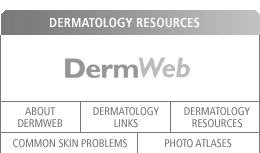|
|
 |
 |
 |
Pigmentary Disorders – Melasma
Melasma is a dark brown discoloration of skin found on sun-exposed areas of the face. It is most commonly seen on the cheeks, forehead, nose, or upper lip and is usually symmetrical.
A common skin disorder young women with brownish skin tones are at the greatest risk, although it can affect women of any skin type.
Melasma is often associated with the female hormones estrogen and progesterone. It is common in pregnant women, women who are taking oral contraceptives, and women taking hormone replacement therapy during menopause. Melasma often fades over several months after stopping oral contraceptives or hormone replacement therapy or after delivering a child. It may return with additional pregnancies or use of these medications.
Sun exposure is also a strong risk factor for melasma. It is particularly common in tropical climates.
The following are possible treatments for melasma:
- a combination of tretinoin cream and a bleaching cream containing hydroquinone to help fade certain types of melasma
- chemical peels
- topical steroid creams
Laser or light treatments are usually not very effective.
The key to preventing melasma is sun avoidance and daily sunscreen use.
« Back to Common Skin Disorders
modified 012508 |
|
 |
|

